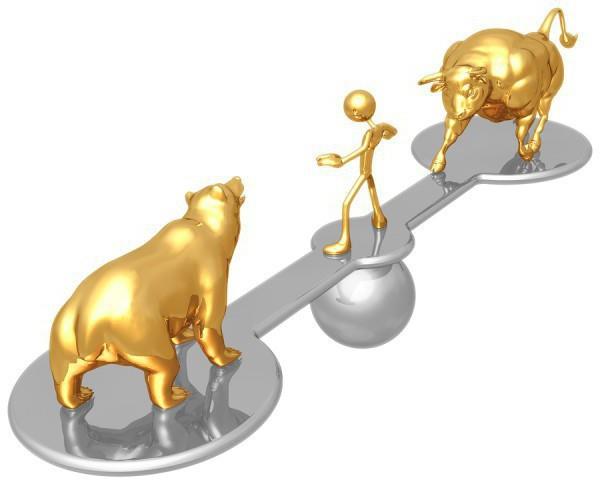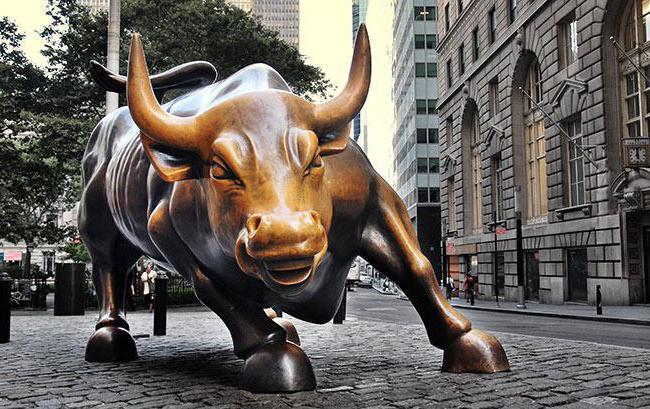Who are the bears and bulls on the stock exchange?
Hello dear friends. I think that it’s time to talk about what bears and bulls mean on the stock exchange and what role is assigned to them on exchange trading.
This will be useful for everyone in principle and interesting for those who decide to trade on the stock exchange.
Everyone who is interested in economic and financial news, probably at least once happened to hear who these animals are. What is the meaning of these names?
These bidders purchase securities expecting their price to increase in the future. Thus, the whole essence of their activity is to buy as cheaply as possible and sell more expensively.
Often, this type of investor is looking for those companies on the market that are still undervalued and whose value should grow in the future, in order to then profitably sell them.
If any of you wonder what it means to open a long position, the answer to it will be just a description of this transaction, which was discussed above.
At the same time, the most famous sculpture of this player of stock trading can be seen in New York. The sculpture of a horned bidder is very popular among tourists.
If you try to remember the most popular merchants who play on the increase, then we should name the well-known Warren Buffett.
Bear on the stock exchange, what kind of beast?
When it comes to such a player on the stock exchange as a bear, then on the contrary he sells assets, predicting a decrease in prices for them in the future. Thus, the purpose of this antagonist is to make a profit on the fall of stock prices, i.e. they sell securities at the very peak of their value.
In turn, naming the brightest club-footed bidders that the stock exchange has known in the entire history of its existence, it is worth mentioning George Soros, who managed to earn a huge fortune by provoking the devaluation of the British currency by large-scale sale of the British pound sterling.
How Bulls Work
Bull-type stock exchange players buy back an asset, which can be in the form of shares or foreign currency, and wait for the moment when its value increases markedly. Thus, he manages to make money on the difference in prices, i.e. the bull is essentially a speculator.
When there is a tendency to increase the prices of shares and other assets in trading, it is generally accepted that such a state of the stock exchange should be considered a “bull market”.
Nevertheless, not all investors can immediately determine the current sentiment among bidders. This is not easy to do, since it is not possible to observe the behavior of other players. And it is possible to draw some conclusions in this case, relying only on various kinds of indicators in the analysis.
Quite often, people are mistaken, considering the observed trend of bullish behavior on the stock exchange to be its positive state. And in fact, when there is an increase in prices for one currency, there is a simultaneous drop in prices for another currency.
Thus, when some participants in stock speculation at this moment make a profit, others are forced to suffer losses.
The Bears’ Strategy
As for clubfoot participants, on the contrary, it is beneficial for them that the value of assets falls. The strategy of behavior of this type of stock market players is that they choose those assets whose value should fall in the future.
At this point, clubfoots take the securities of this company on bail, i.e. borrowing for example 1000 shares, immediately sell them at a price of $ 1 apiece. Thus, 1000 dollars fall on their account.
At a time when the value of the assets sold falls, the bears buy them back, but at half the cost. Having bought the company’s shares, this bidder returns them back, while earning $ 500 on the exchange rate difference.
At the same time, in the strategy of exchange players such as “bulls” and “bears”, the following points should be taken into account.
Both clubfoot and horned players never wait for the right occasion. These participants of the exchange market always analyze the situation and, based on the results of the analysis, try to predict the likely consequences and dynamics of the movement.
For example, if the bears, guided by certain circumstances and the results of the analysis, suggest that the company’s expected reporting in the near future will show negative results, then there will be a drop in the value of its shares.
Taking advantage of these considerations, bears quickly sell the company’s securities at a still good price and buy again when their value drops.
Neither of them is waiting for a lucky chance and themselves influence the situation on the market. It is clear that some small volume of securities is not able to have any impact on their quotes.
It is quite different when players have the capabilities and the necessary resources, which allows them to operate tens of thousands of shares. Then the price will either fall if the clubfoot strategy is implemented, or it will rise when the bulls play.
And finally, like bears, bulls do not wait for fortune to smile on them and, if necessary, change their strategy to the opposite. Only experienced traders are capable of this. Such players have the financial ability to play both on the increase and on the decline.
Who are the bears and bulls on the stock exchange?
- Carpet cleaning in home
- What are the types of compensation for damage to the insured vehicle
- How to replace TEN with a dishwasher – 10 steps to success
- Advice Personal injury settlement
- Thermal insulation and waterproofing basements
- recover or cancel restoration of the operating system Windows 7
- Cast iron cookware without coating
- Purchaser of structured annuity solution – how to find structured annuity buyer that suits you
- The Mexican Government plans to reform the banking sector
- Low Income Home Improvement Grants Home Improvement Projects


